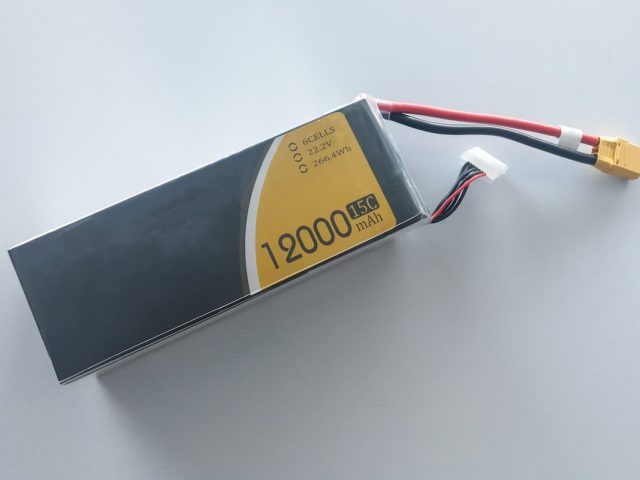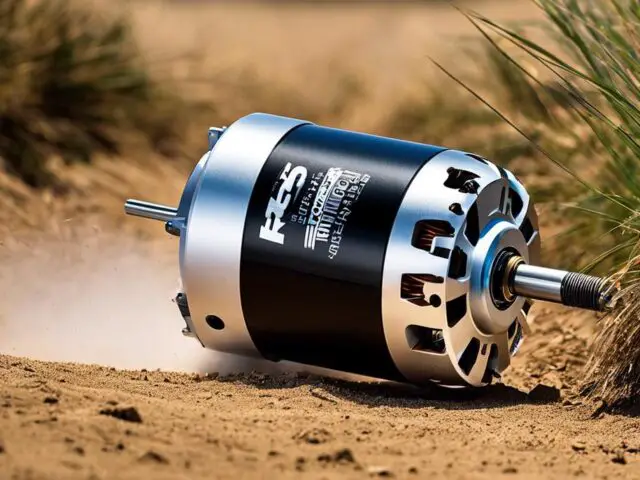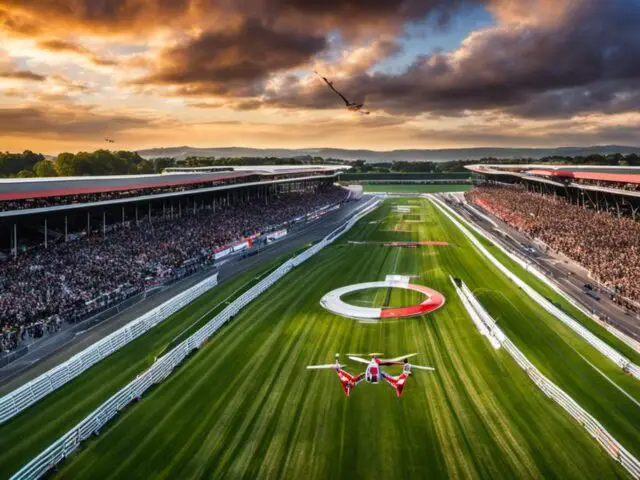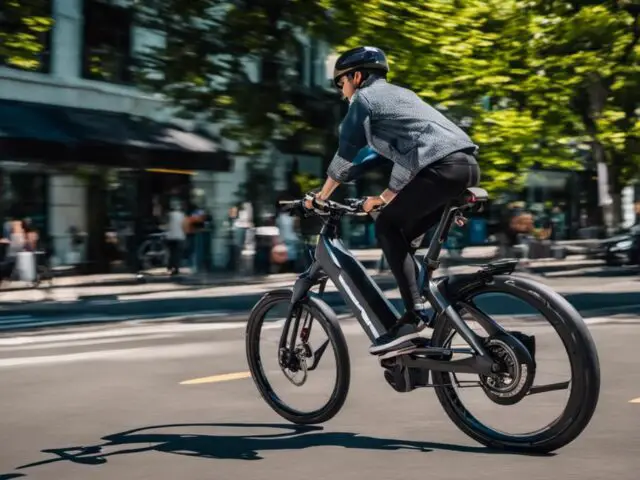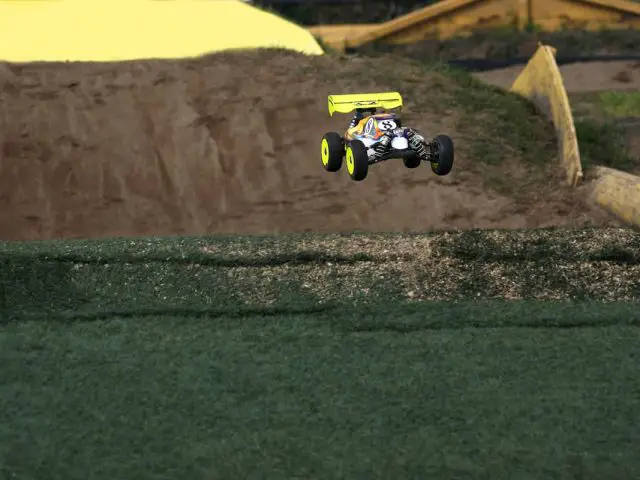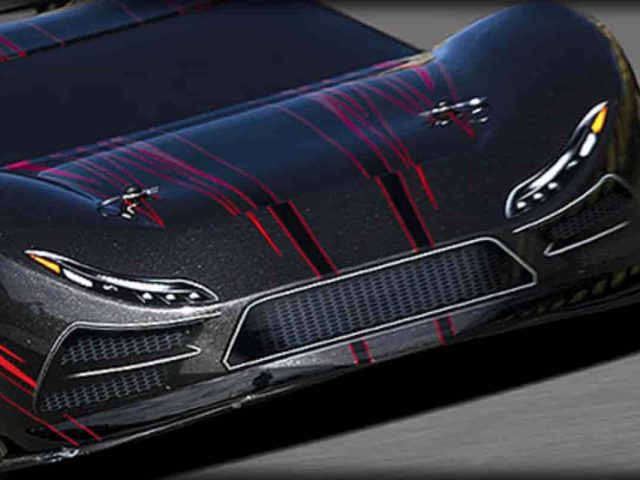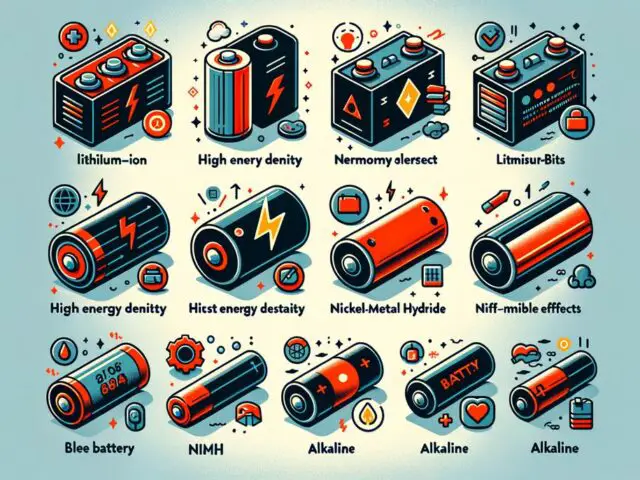Embracing new innovations in technology and competition, FPV (First Person View) racing is a growing sport phenomenon making waves in today’s digital world. This fusion of high speed, agility, and ingenuity offers spectators a thrilling duet of physical dexterity and technological prowess. We can explore the ever growing sport of FPV and ask ourselves “What is FPV racing?” but let’s first delve into the heart of FPV racing, exploring the innovative technology underpinning this sport, the essential setup, and the remote controlled drones that slice through air at breakneck speeds. The journey continues by illuminating the significant role of advanced technology in shaping and propelling the sport forward, extending to the latest innovations in drones, goggles, signal transmission, and battery power.
Understanding: What Is FPV Racing?
The Thrill of Speed: FPV Racing & its Mechanics
Breaking away from traditional racing sports; it’s time to take a deeper dive into technology’s latest adrenaline-pumping opportunity—First Person View (FPV) Racing. It’s breathtaking, it’s innovative, and downright electrifying. Get ready to explore what FPV racing is and how it’s stirring waves in the technology and sporting worlds.
What Is FPV Racing?
First things first, what is FPV racing? In simpler terms, FPV racing involves racing drones at super-fast speeds using a real-time video feed. The ‘First Person View’ implies that participants experience the action through the drone’s eyes, almost like a video game brought to life.
What makes it so special is the combination of physical racing and virtual reality gameplay, delivering an immersive and innately high-tech experience. Pilots use a special pair of googles connected to their drone’s camera, and a live video feed is projected to the inside of the googles, giving them a drone’s-eye view of the world.
How Does FPV Racing Work?
Now, let’s delve into the mechanics. How does FPV racing work? Interestingly, it’s less about the drones and more about the radio signals communicating with multiple components on the drone that maneuver these flying speedsters.
To begin with, the FPV goggles are linked to the video transmission system of the drone. The video feed is broadcasted between the drone and goggles using radio frequencies on the 2.4 GHz or 5.8 GHz frequency band.
The smooth control of drones relies on another radio system, usually operating on a different frequency to avoid interference. The drone’s movements—ranging from the speed, direction, and height—are precisely controlled via a handheld radio transmitter, while the video footage continues to stream live into the FPV goggles.
For enhanced precision and navigation, some racers use additional equipment like an on-screen display (OSD). An OSD overlays crucial data such as altitude, speed, and compass direction onto the live video feed, which helps pilots make precise movements and calculated strategies during the race.
No doubt, the unique blend of physical and virtual worlds through FPV racing serves as an alluring testimony to this technology’s prowess. It’s invigorating, thrilling, and shakes the notion of ‘standard’ racing games to its core.
FPV racing redefines what it means to engage with technology. In a world where automation is king, this sport stands as a beacon of the interactive and dynamic use of tech. It embraces the future by captivating us with thrilling, high-speed races while proving how soaring heights can be achieved, thanks to breakthroughs in technology. In fact, it solidifies the belief: The future indeed looks fast, digital, and undoubtedly—spectacular.

The Role of Technology in FPV Racing
First-person view (FPV) technology plays a critical role in the world of remote-controlled (RC) and unmanned aerial vehicles (UAVs), such as drones and quadcopters. FPV technology enables users to experience flying these devices as if they were inside them, thanks to real-time video feeds transmitted from an onboard camera to a ground station or goggles worn by the operator. Here are some key aspects of the role of technology in FPV:
- Live Video Transmission: FPV technology involves the use of cameras mounted on the RC vehicle, which capture live video footage. This video is transmitted wirelessly in real-time to a receiver, typically located in a pair of FPV goggles or a monitor, allowing the operator to see what the drone or RC vehicle sees.
- Immersive Experience: FPV goggles provide an immersive experience by displaying the live video feed in a way that makes the operator feel as though they are inside the vehicle. This is particularly popular in drone racing and acrobatics, where precise control and a real-time view are essential.
- Latency Reduction: Reducing latency in video transmission is crucial in FPV applications. High latency can lead to delayed reactions and make flying or controlling a vehicle more challenging. Modern FPV systems are designed to minimize latency to provide a more responsive experience.
- Resolution and Quality: Advancements in camera technology have led to improved video resolution and image quality. High-definition (HD) and even 4K cameras are now commonly used in FPV setups, enhancing the operator’s ability to see details and navigate effectively.
- Long-Range Capabilities: Technology has also improved the range over which FPV systems can operate. Long-range FPV allows operators to explore larger areas or fly over greater distances while maintaining a stable video connection.
- Autonomous Features: Some FPV systems incorporate autonomous features like obstacle avoidance, GPS navigation, and return-to-home functions. These features are made possible through the integration of advanced sensors and GPS technology.
- Diversity Receivers: To enhance signal reliability, FPV setups often use diversity receivers, which combine signals from multiple antennas to minimize signal dropout or interference, especially in challenging environments.
- Telemetry Data: FPV technology can transmit telemetry data such as battery voltage, GPS coordinates, speed, altitude, and more to the operator’s ground station or goggles. This information is crucial for monitoring the vehicle’s status and making informed decisions during flights.
- Recording and Playback: Many FPV systems are equipped with onboard DVR (Digital Video Recorder) capabilities, allowing operators to record their flights for analysis, sharing, or entertainment purposes.
- Regulatory Compliance: Technology also plays a role in ensuring compliance with local regulations. Some FPV systems include features that restrict flight in no-fly zones or help operators follow safety guidelines.
Technology is fundamental to the FPV experience, enabling users to fly RC vehicles with precision and confidence by providing a real-time, immersive view of the vehicle’s surroundings and essential data. Ongoing advancements in FPV technology continue to push the boundaries of what is possible in terms of control, range, image quality, and safety.
FPV Racing as a Competitive Sport
Diving into the intricacies of FPV racing, the performance-centric drone designs are an inherent nature of this competition. Apart from being mere flying machines, these max-speed highly tuned drones often house powerful propulsion systems with lightning quick responses. These dynamic powerhouses ensure a competitive edge in the race but also are capable of insane maneuvers, making for an exhilarating viewing experience.
As much as speed and maneuverability are pivotal, FPV racing heavily relies on stellar camera technology advancements. In this sport, a clear, high-resolution, real-time video feedback is crucial. Therefore, these drones are generally equipped with high-speed cameras that manage to capture every split-second detail of the race environment. This, in turn, is relayed back to the pilot, enabling instant and calculated actions.
Adding to the list of technical features is the enhanced transmission system. The very essence of FPV racing rests on the pilot’s ability to control the drone accurately and instantaneously. This advanced signal transmission technology leverages the power of radio waves, virtually negating latency issues and improving the real-time interactive experience significantly.
FPV goggles enable participants to virtually sit in the cockpit of a speeding drone. These high-tech goggles transform the user’s perspective completely, offering a truly immersive experience. Advancements are continually being made to improve comfort, field-of-view, resolution, and user-experience, leading to newer and more sophisticated designs hitting the market continually.
The development of drone technology does not end with hardware. Software advancements, particularly in training and simulation, also play an integral role in this techno-sport’s evolution. Pilots can now engage with an array of drone racing simulators allowing them to hone their skills and improve their flight techniques without risking an expensive equipment crash.
In the nerve-racking world of FPV racing, telemetry technology has proven to be another game-changer. With these advancements, pilots can now access a plethora of real-time statistics like speed, distance, altitude, and more. This vital information aids them in maintaining optimal conditions during a race, a key to maintaining an advantage over competitors.
Automation, bolstered by advanced algorithms, is being gradually integrated into FPV racing. With features such as launch assist and adaptive braking, pilots get to enjoy a competitively controlled race environment and significantly improving their performance potential.
FPV (First-Person View) racing is a competitive sport that has gained significant popularity in recent years. Here are some key aspects to consider when talking about FPV racing as a competitive sport:
- Equipment: FPV racing requires specialized equipment. Pilots use custom-built racing drones equipped with high-performance components, including powerful motors, high-capacity batteries, lightweight frames, and low-latency FPV camera systems. The FPV goggles provide an immersive view of the course.
- Racing Courses: FPV racing courses are designed with a combination of obstacles, gates, flags, and other structures. These courses can be set up indoors or outdoors, and they often feature tight turns, high-speed straights, and challenging maneuvers to test the skills of the pilots.
- Race Formats: FPV races can have various formats, including individual time trials, head-to-head races, and team events. Time trials involve pilots completing a course as quickly as possible, while head-to-head races pit multiple pilots against each other in a race to the finish line.
- Safety Measures: Safety is a significant concern in FPV racing. Pilots and organizers take precautions to ensure the safety of participants and spectators. This includes establishing no-fly zones, limiting the power of drones, and requiring pilots to wear protective gear.
- Spectator-Friendly: FPV racing is designed to be spectator-friendly. Live video feeds from the drones are often broadcast on large screens or online platforms, allowing spectators to watch the action from the pilot’s perspective. This adds an element of excitement and engagement to the sport.
- Competitions and Leagues: FPV racing has grown into a competitive sport with various leagues and competitions around the world. Some of the most prominent include the Drone Racing League (DRL), MultiGP, and the International Drone Racing Association (IDRA). These organizations organize events with cash prizes and professional pilots.
- Skill and Precision: FPV racing requires a high degree of skill and precision. Pilots must have excellent control over their drones to navigate the courses at high speeds while avoiding obstacles and making split-second decisions.
- Community and Innovation: The FPV racing community is known for its spirit of innovation and collaboration. Pilots often share tips, techniques, and designs for racing drones, leading to constant advancements in technology and technique.
- Sponsorships and Sponsorship Opportunities: As FPV racing has gained popularity, it has attracted sponsorships from companies interested in the technology and the sport’s potential for exposure. Many professional pilots receive sponsorship deals that help support their racing endeavors.
- Future Growth: FPV racing continues to grow as a sport and entertainment spectacle. Its combination of technology, speed, and skill appeals to a wide audience, and it has the potential to expand further into mainstream sports and entertainment.
FPV racing is a thrilling and competitive sport that combines cutting-edge technology, skilled pilots, and innovative course design. It has grown rapidly in popularity and has the potential to become an even more prominent and recognized sport in the future.

Getting Started with FPV Racing
Taking the Leap into FPV Racing: Here’s Where to Start and What You’ll Confront
Getting started in FPV (First-Person View) racing can be an exciting journey, but it requires some initial investment and learning. Here’s a step-by-step guide on how to get started in FPV racing:
- Research and Learn:
- Start by researching FPV racing online, watching videos, and reading articles. Understand the basics of how FPV racing works, including the equipment, racing formats, and safety guidelines.
- Join online forums, communities, or social media groups related to FPV racing to connect with experienced pilots and ask questions.
- Legal and Safety Considerations:
- Familiarize yourself with local and national regulations regarding drone flying. In many countries, there are specific rules and restrictions for drone usage, which may include altitude limits, no-fly zones, and registration requirements.
- Always prioritize safety. Wear safety gear like goggles, and follow safety guidelines for flying FPV drones. Respect privacy and fly in safe locations away from people and property.
- Budget Planning:
- Determine your budget for getting started in FPV racing. The initial investment can vary depending on the quality and complexity of the equipment you choose.
- Select Your Equipment:
- Racing Drone: Choose or build a racing drone. You can either purchase a ready-to-fly (RTF) racing drone or build a custom one using individual components. Building your own gives you more customization options but requires more technical knowledge.
- FPV Goggles: Invest in a good pair of FPV goggles to provide an immersive flying experience. There are various models with different features and price ranges.
- Radio Transmitter: Select a quality radio transmitter that suits your needs. Popular choices include FrSky and Taranis radios.
- Batteries and Charger: Purchase high-quality LiPo batteries and a compatible charger. Ensure you have enough batteries to keep flying.
- Tools and Accessories: Gather tools such as soldering equipment, screwdrivers, and zip ties. You’ll also need antennas, spare parts, and propellers.
- Learn to Fly:
- Start by practicing in a safe and open area, such as a large field or a dedicated RC flying site. Practice basic flight maneuvers, including hovering, forward flight, turns, and altitude control.
- Gradually progress to more advanced maneuvers, such as flips, rolls, and figure-eight patterns.
- Simulators: Consider using FPV simulator software on your computer to practice flying in a virtual environment. This can help you improve your skills without risking your real drone.
- Join a Community or Club:
- Find local FPV racing clubs or groups. Joining a community can provide you with valuable guidance, access to racing events, and opportunities to meet other pilots.
- Attend Races and Competitions:
- Attend local FPV racing events or races organized by clubs. Even if you’re not competing initially, observing races can help you understand the dynamics and strategies involved.
- Upgrade and Customize:
- As you gain experience, you may want to upgrade and customize your equipment to improve performance or suit your racing style.
- Stay Informed and Practice:
- Keep up to date with developments in FPV technology and racing techniques.
- Continue practicing regularly to refine your flying skills and racecraft.
- Have Fun and Be Patient:
- FPV racing can be challenging, but it’s also a lot of fun. Enjoy the learning process, and don’t get discouraged by crashes or setbacks.
Remember that FPV racing is a hobby that requires practice and dedication. With time and effort, you can become a skilled FPV pilot and enjoy the excitement of racing

FPV Racing is a captivating intersection of technology and sportsmanship with bountiful opportunities for novice enthusiasts to seasoned professionals. From understanding the technology integrated in FPV racing to witnessing its global rise as a competitive sport and how to get a hands-on experience, you can see the future of FPV racing and the potential it has for the future. As the tech world marches on, so does FPV racing, carrying with it the unquenchable spirit of competition, a testament to human accomplishment in marrying technological advancements with sportsmanship. The thrilling tech-powered sport of FPV racing beckons irresistibly to those willing to embrace the challenge and the thrill of the race.
Helpful Links
For all your RC Questions, Click HERE
If you are interested in RC cars and trucks, RC World has you covered.
For RC boats and watercraft, check these articles out.
For all your RC Airborne endeavors, we have everything you need.
Why Choose to Upgrade Your RC Car to a LiPo Battery
You might have heard of LiPo batteries that has taken the tech world by storm. As a RC car owner, the battery is understandably half of your concern….
9 Best Motor Powers for Off-Road Electric Skateboards
Embarking on an exhilarating journey through untamed landscapes requires not just courage but also the right equipment. Off-road electric skateboarding is a pursuit where the synergy between man…
Mastering FPV Drone Racing: Rules and Regulations
FPV drone racing has exploded in popularity over the past few years, attracting thrill-seekers and tech enthusiasts alike. With its fast-paced action and adrenaline-inducing maneuvers, it’s no wonder…
Mastering E-Bike Collision Avoidance Tech
As we careen into an era where technology sits at the forefront of almost all aspects of our lives, not least in the realm of personal transportation, e-bikes…
E-Bike Lifecycle: Reduce Carbon Emissions
In an age where climate change looms large and the quest for sustainable living becomes increasingly pressing, electric bicycles (e-bikes) emerge as a beacon of hope in the…
What does Bashing Mean in the RC Racing Community?
If you like RC racing then you must have heard the term “Bashing” at least once. It’s not uncommon to be unfamiliar with the term if you are…
Rev Up Adventures with Electric Mountain Bikes
In today’s ever-evolving world of outdoor adventure, one innovation stands out – electric mountain bikes. A blend of traditional cycling and cutting-edge technology, these bikes promise a new…
Traxxas XO-1 Review: Fastest RC Car Top Speed of 100mph
For those with a real need for speed you need look no further than this work of art. The Traxxas XO-1 as able to reach 60mph in a…
Extend Skateboard Remote Battery Life
Have you ever noticed how the performance of your electric skateboard remote can vary, leaving you puzzled about its inconsistency? This guide is designed to unravel the mystery…

